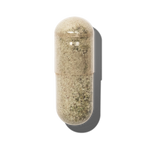Huge savings sitewide + FREE gift! Ends soon.
What really happens when you sleep?
Ever wonder what goes on inside your head (and body!) when you drift off to dreamland? We all know sleep is important, but what's actually happening during those precious hours of shut eye? Sleep is a complex process with distinct stages, each playing a crucial role in keeping our body and mind functioning at their best.
We'll break down the fascinating journey of sleep through each stage, and how they contribute to you feeling refreshed and rejuvenated when you wake up.
The Stages of Sleep
Your sleep journey isn't a one way trip directly to dreamland. It is a cyclical adventure with four distinct stages, each crucial for physical and mental wellbeing.
NREM (Non-Rapid Eye Movement) Sleep and REM (Rapid Eye Movement) Sleep form the two main types of sleep. NREM covers the first three stages of the sleep cycle, focusing on physical restoration, while REM sleep engages the brain in processing emotions, memories, and stress1.
Think of this as the boarding call for your sleep voyage – the fleeting moment between being awake and falling asleep. Lasting just a few minutes, it's your body's way of easing into the nightly shutdown. Your heartbeat, breathing, and eye movements slow, and your muscles start to relax1.
It's easy to be woken up in this stage, which is why sometimes you feel like you're falling and jerk awake! As you drift off, your brain waves slow down from beta (waking) to theta waves2.
Now, we sail even deeper into the calmer waters of dreamland. This stage lasts about 25 minutes and acts as the bridge to deeper sleep. Stage 2 is also where sleep talking and night terrors can occur (although thankfully, not for everyone!).
Your body temperature drops and your heart rate continues to slow as you are less likely to be woken by disturbances1. This “light” stage of sleep is crucial for body restoration, energy replenishment, and preparing you for deep sleep. Here, your brain waves slow down further to theta and alpha waves2.
Welcome to the heart of your sleep cycle, known as “slow wave” sleep. This stage is all about deep and restorative sleep. Your heartbeat and breathing reach their lowest levels as the body is fully relaxed, and brain waves become even slower, dominated by delta waves2.
This is when your body goes into high-gear restoration mode, focusing on tissue growth and repair, immune system strengthening, and energy restoration1. Growth hormone is also released during this stage! Waking up during this phase of sleep can feel disorienting because your body is so deeply at rest.
About 90 minutes after you fall asleep, you hit the REM (Rapid Eye Movement) stage, where dreams come alive. Brain activity surges back up nearly to waking levels, with beta and theta waves dominating2.
This stage is essential for brain functions, like processing emotions, memories, and stress as you digest the information from the day1. Despite the brain being in a state of activity very near to when you're awake, your body remains in a state of near-paralysis (except for those darting eyes), preventing you from acting out your dreams.
The Cycle Continues…
Throughout the night, you'll cycle through these stages multiple times, with each cycle lasting about 90-120 minutes. Each phase plays a vital role in ensuring you wake up feeling refreshed and ready to tackle the day.
Just like any successful journey needs preparation, creating a relaxing bedtime routine is key to falling into a deep sleep.
For inspiration on creating your own nightly ritual to secure your quality slumber, check out Jess’ 5 Step Sleepy Routine. Honor your sleeping hours as a sacred time to unwind and let go of the day’s stress. Allow your body and mind the deep healing it needs for you to wake up feeling refreshed, rejuvenated, and ready to take on the day!
References:
- Patel AK, Reddy V, Shumway KR, et al. Physiology, Sleep Stages. [Updated 2024 Jan 26]. In: StatPearls [Internet]. Treasure Island (FL): StatPearls Publishing; 2024 Jan-. Available from: https://www.ncbi.nlm.nih.gov/books/NBK526132/
- www.nhlbi.nih.gov. (2022). How Sleep Works - Your Sleep/Wake Cycle | NHLBI, NIH. [online] Available at: https://www.nhlbi.nih.gov/health/sleep/sleep-wake-cycle.




























































































